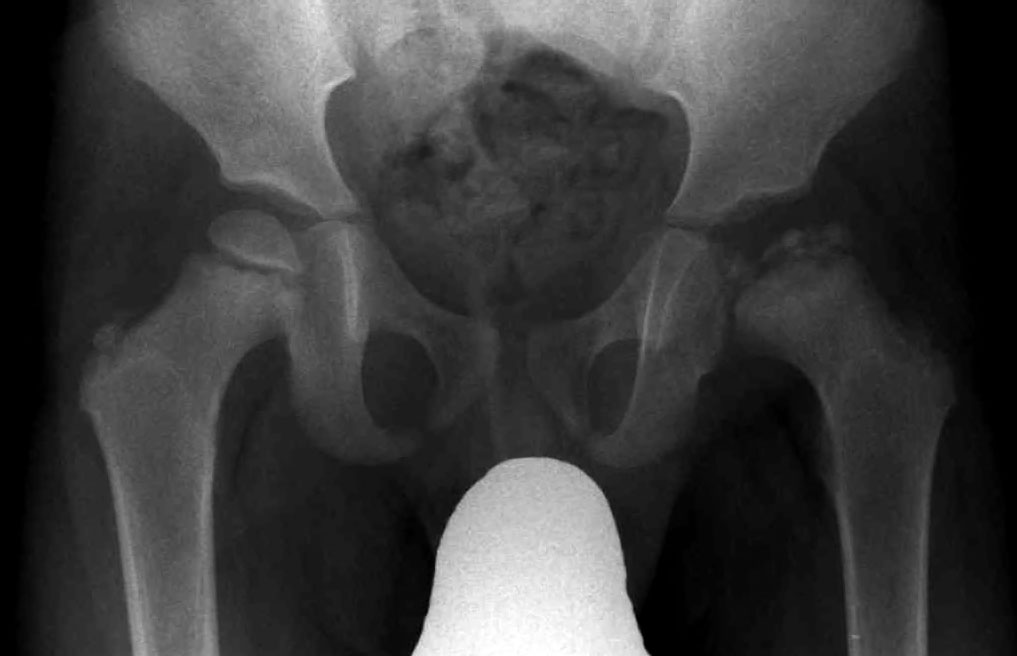Legg-Calve-Perthes Disease

Legg-Calve-Perthes disease (LCPD) occurs when blood supply to the ball of the thighbone in the hip (femoral head) is disrupted. Without an adequate blood supply, the bone cells die. LCPD usually occurs in children between the ages of 4 and 10. Early symptoms may include limping; pain in the hip, thigh or knee; and reduced range of hip motion. Later in the disease course, there may be leg length discrepancy (one leg longer than the other) and wasting of the muscles around the hip. The condition can last for several years before new bone formation (re-ossification) and eventual healing occurs. Some people with LCPD go on to develop degenerative arthritis in adulthood.
The underlying cause of LCPD is often not known. Sometimes it results from a slipped capital femoral epiphysis, trauma, steroid use, sickle-cell crisis, toxic synovitis, or congenital hip dysplasia. It usually is not caused by genetic factors, but a few familial cases with autosomal dominant inheritance have been reported. In a small percentage of cases, mutations in the COL2A1 gene were found to be responsible.
Treatment aims to keep the thigh bone inside the hip socket. Treatment options may include rest or medication for pain; physical therapy; using a brace; or surgery.
The underlying cause of LCPD is often not known. Sometimes it results from a slipped capital femoral epiphysis, trauma, steroid use, sickle-cell crisis, toxic synovitis, or congenital hip dysplasia. It usually is not caused by genetic factors, but a few familial cases with autosomal dominant inheritance have been reported. In a small percentage of cases, mutations in the COL2A1 gene were found to be responsible.
Treatment aims to keep the thigh bone inside the hip socket. Treatment options may include rest or medication for pain; physical therapy; using a brace; or surgery.